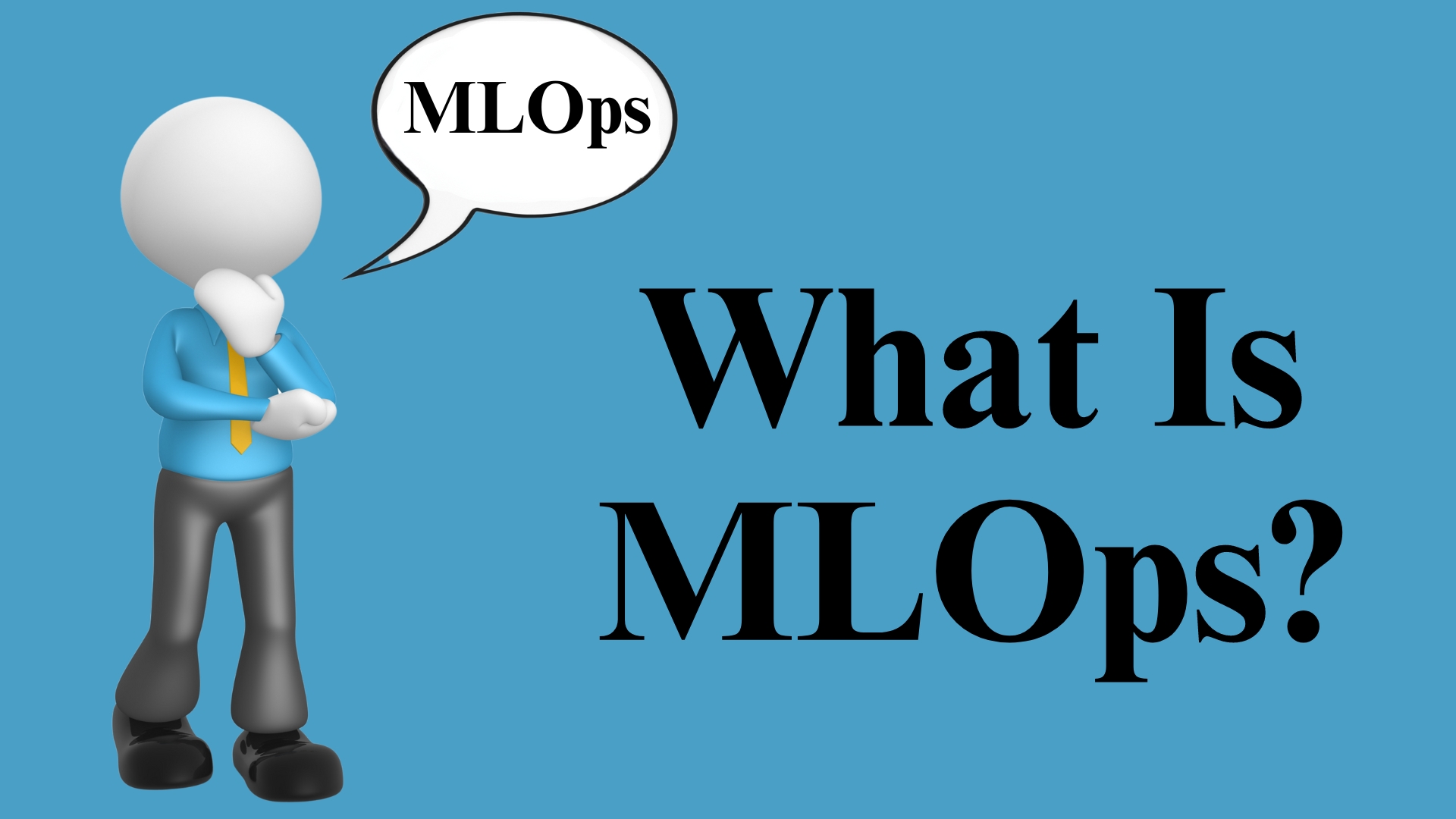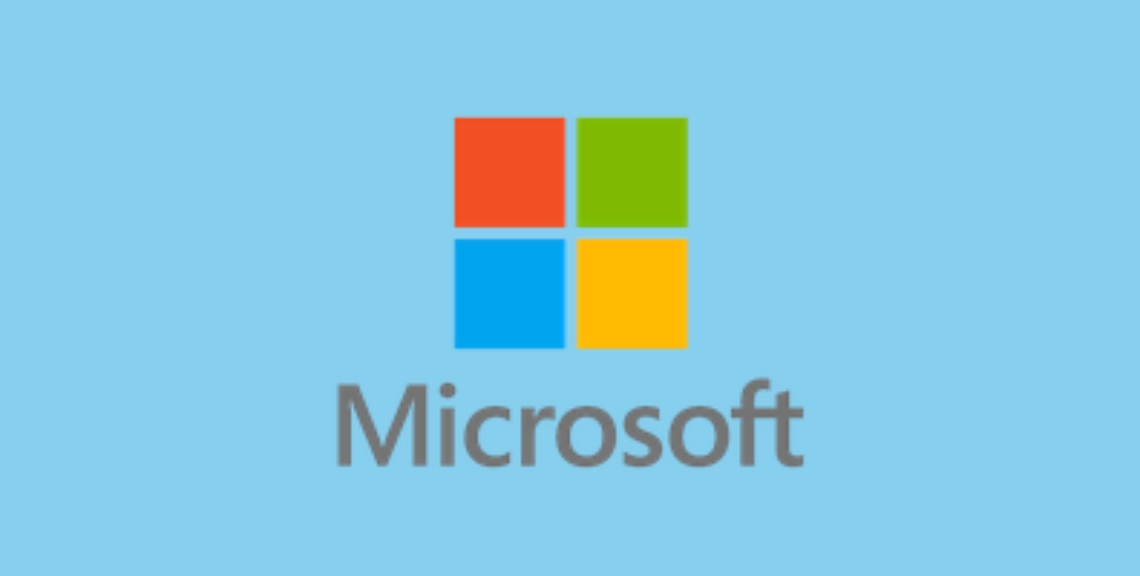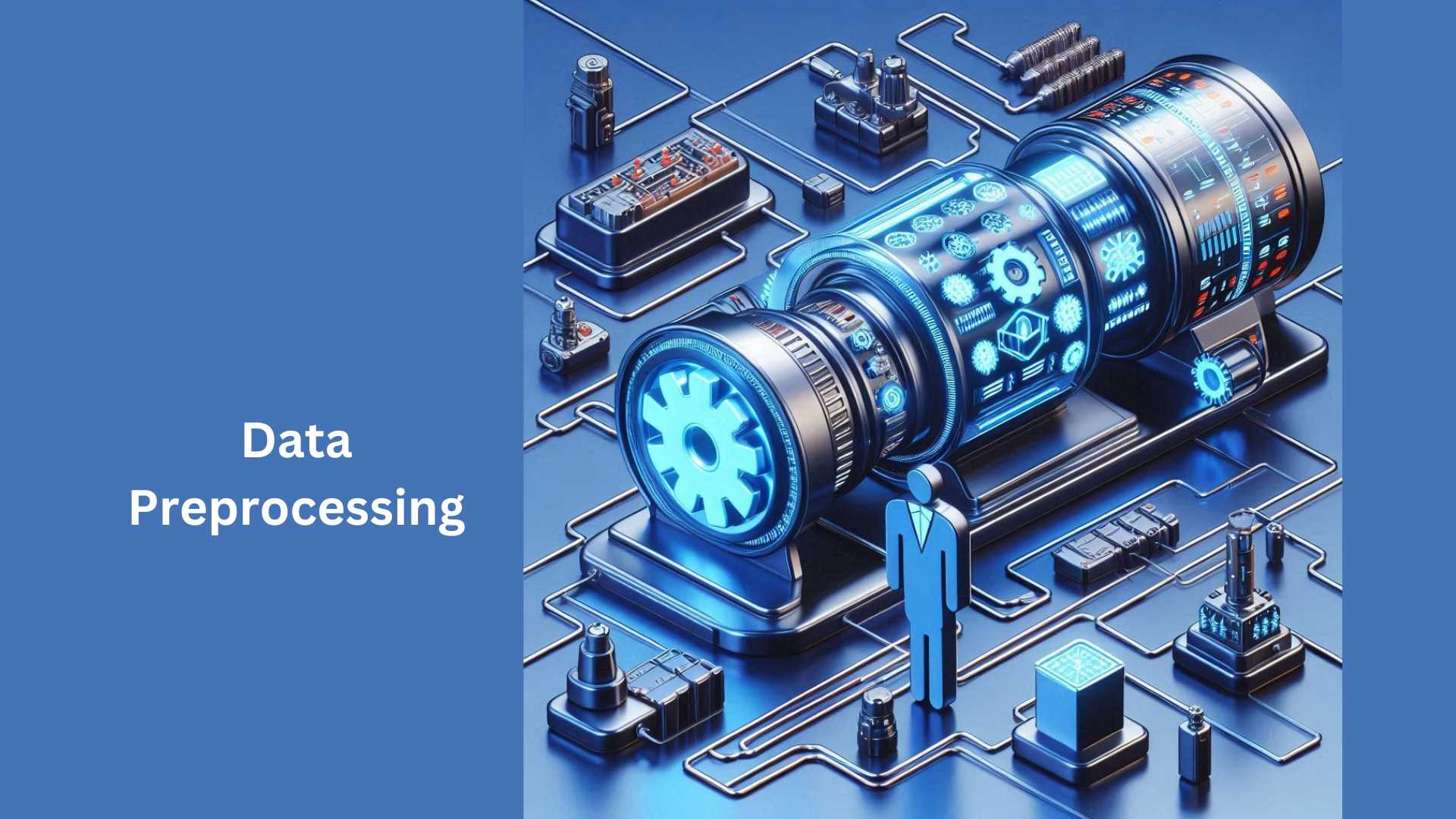“What is MLOps”, an abbreviation for Machine Learning Operations, embodies a comprehensive framework designed to optimize the deployment, monitoring, and administration of machine learning models within production environments. It seamlessly integrates elements from the domains of machine learning, data engineering, and software development to ensure the efficient deployment and sustained accuracy of machine learning models.
What Is MLOps and Its Significance?: Understanding MLOps
At its core, MLOps represents a set of practices aimed at streamlining and automating the machine learning models in production environments with
- Deployment,
- Management
- Monitoring
By bridging the gap between data science and operations, MLOps ensures that machine learning models are not merely experimental prototypes but reliable assets integrated into real-world systems.
This amalgamation of practices encompasses various processes, tools, and methodologies essential for effectively managing the lifecycle of machine learning models. It encompasses everything from data preprocessing and model training to deployment, monitoring, and maintenance. Through the implementation of MLOps practices, organizations can scale their machine learning initiatives, enhance model performance, reduce deployment time, and foster collaboration between data scientists, engineers, and other stakeholders.
What is MLOps? Understanding the Secrets of MLOps:
At its essence, MLOps revolves around the operationalization of machine learning. It encompasses the entirety of processes and infrastructure essential for transitioning a machine learning model from its developmental stages to deployment and subsequent maintenance. This lifecycle management encompasses activities ranging from data collection and preprocessing to model training, deployment, and ongoing monitoring.
The Importance of MLOps
Enhancing Collaboration
MLOps catalyzes fostering collaboration among diverse stakeholders such as data scientists, machine learning engineers, and operations teams. Through the establishment of standardized processes and the provision of appropriate tooling, MLOps facilitates seamless teamwork across departments. This collaborative environment accelerates the pace of model development and deployment, ultimately contributing to organizational agility.
Streamlining Processes
In the absence of robust MLOps practices, organizations often find themselves grappling with manual and ad-hoc procedures for deploying and managing machine learning models. MLOps intervenes by automating many of these tasks, thereby reducing the time and effort required to transition models into production. This automation not only enhances operational efficiency but also empowers organizations to scale their machine-learning endeavors with ease.
Ensuring Model Performance
A paramount objective of MLOps is to uphold the reliability and performance of machine learning models within production environments. By integrating robust monitoring and feedback mechanisms, MLOps equips organizations with the capability to promptly detect and rectify issues such as model drift and performance degradation. This proactive approach to model management safeguards against inaccuracies and ensures the continued delivery of precise predictions over time.
By adhering to MLOps principles, organizations can effectively bridge the gap between machine learning development and operational deployment, thereby maximizing the value derived from their machine learning initiatives.
Understanding MLOps
To understand MLOps better, it’s crucial to delve into its key components and principles. Firstly, MLOps emphasizes automation, enabling the seamless integration of machine learning models into existing infrastructure through automated pipelines. These pipelines orchestrate the flow of data, from ingestion and preprocessing to model training, evaluation, and deployment, streamlining the entire workflow.
Secondly, MLOps promotes collaboration and reproducibility by facilitating version control of models, datasets, and code. This ensures that experiments are reproducible and transparent, allowing teams to track changes, share insights, and collaborate effectively across the model development lifecycle.
Furthermore, MLOps emphasizes continuous integration and continuous deployment (CI/CD) practices adapted for machine learning. This entails automating testing, validation, and deployment processes to accelerate the delivery of new models while maintaining quality and reliability.
Evolution of MLOps
The evolution of MLOps can be traced back to the challenges posed by the rapid growth of machine learning in various industries. Initially, organizations struggled with deploying and managing machine learning models at scale, leading to inconsistencies, bottlenecks, and operational inefficiencies.
As machine learning became more prevalent and mission-critical, the need for a systematic approach to model management became evident. Thus, MLOps emerged as a response to these challenges, drawing inspiration from DevOps principles and software engineering best practices.
Over time, MLOps has evolved to incorporate a wide range of tools and technologies tailored to the unique requirements of machine learning workflows. From specialized platforms for model versioning and experimentation to automated deployment frameworks and model monitoring solutions, the MLOps ecosystem continues to expand, driven by the growing demand for scalable, reliable, and efficient machine learning systems.
MLOps represents a paradigm shift in the way organizations develop, deploy, and maintain machine learning applications. By adopting MLOps practices, businesses can unlock the full potential of their machine learning initiatives, driving innovation, and delivering value to stakeholders in a fast-paced, data-driven world.
Why Use MLOps?
- Efficiency and Scalability: MLOps enables organizations to deploy machine learning models efficiently and at scale. By automating repetitive tasks such as model training, testing, and deployment, MLOps reduces the time and resources required to bring models into production.
- Maintainability and Reproducibility: With MLOps practices, models become easier to maintain and reproduce. Version control, dependency management, and reproducibility are crucial aspects of MLOps that ensure consistency and reliability across different environments.
- Risk Reduction: MLOps helps mitigate the risks associated with deploying machine learning models into production. Through continuous integration, continuous deployment (CI/CD), and rigorous testing, MLOps minimizes the chances of errors or discrepancies that could impact business operations.
- Alignment with DevOps Practices: MLOps aligns machine learning workflows with DevOps principles, fostering collaboration between data scientists, engineers, and operations teams. This alignment promotes a culture of automation, continuous improvement, and cross-functional communication.
Challenges in ML Deployment:
- Model Drift: Machine learning models can degrade in performance over time due to changes in data distributions or underlying patterns. MLOps addresses this challenge by implementing robust monitoring systems that detect and alert stakeholders to model drift, prompting retraining or recalibration as necessary.
- Infrastructure Complexity: Deploying machine learning models often require complex infrastructure configurations, especially for large-scale or real-time applications. MLOps simplifies infrastructure management through containerization, orchestration, and cloud-native technologies, enabling seamless deployment across diverse environments.
- Version Control and Collaboration: Managing version control and facilitating collaboration among data scientists, engineers, and other stakeholders can be challenging in ML deployment. MLOps platforms offer versioning capabilities, collaborative tools, and workflow automation to streamline development workflows and ensure transparency and accountability.
- Regulatory Compliance and Governance: Compliance with regulatory requirements and maintaining data privacy and security are paramount in ML deployment. MLOps incorporates governance frameworks, audit trails, and security measures to ensure models comply with relevant regulations and ethical guidelines.
Role of MLOps in Addressing Challenges:
- Automated Pipeline Orchestration: MLOps platforms automate the end-to-end machine learning pipeline, from data ingestion and preprocessing to model training, evaluation, and deployment. This automation minimizes manual intervention, reduces errors, and accelerates time-to-market.
- Continuous Integration and Deployment (CI/CD): MLOps embraces CI/CD practices to facilitate rapid and iterative model deployment. Automated testing, validation, and deployment pipelines enable organizations to deploy updates and improvements to models quickly and reliably.
- Model Monitoring and Management: MLOps provides tools for monitoring model performance, detecting anomalies, and tracking key performance indicators (KPIs) in real time. This proactive monitoring allows organizations to identify issues promptly, such as model drift or degradation, and take corrective actions to maintain optimal performance.
- Scalable Infrastructure and Resource Management: MLOps platforms leverage scalable infrastructure solutions such as containers, Kubernetes, and serverless computing to ensure efficient resource utilization and accommodate varying workloads. This scalability enables organizations to deploy and manage models across diverse environments, from edge devices to cloud infrastructure.
In essence, MLOps plays a pivotal role in overcoming the challenges associated with ML deployment by promoting automation, collaboration, and best practices throughout the machine learning lifecycle. By adopting MLOps principles and technologies, organizations can realize the full potential of their machine-learning initiatives while ensuring reliability, scalability, and compliance with regulatory standards.
How MLOps Work?
Here’s how it typically works:
- Data Collection and Preparation: MLOps starts with collecting and preparing data for training the machine learning model. This involves data cleaning, preprocessing, and ensuring the data is in a format suitable for training.
- Model Training: Once the data is ready, the machine learning model is trained using various algorithms and techniques. This step involves experimentation with different models, hyperparameters tuning, and validation to achieve the best performance.
- Model Deployment: After the model is trained and evaluated, it needs to be deployed into production environments where it can make predictions on new data. MLOps automates this deployment process, ensuring that the model is deployed consistently and reliably.
- Monitoring and Management: Once the model is deployed, MLOps tools continuously monitor its performance and health in production. This includes tracking metrics such as accuracy, latency, and resource utilization. If the model’s performance degrades or drifts from its expected behavior, MLOps tools can trigger alerts and automatically initiate remediation actions.
- Feedback Loop: MLOps establishes a feedback loop between model performance in production and the development process. Insights from monitoring are used to improve future iterations of the model, including retraining with updated data or adjusting the model’s architecture.
- Version Control and Reproducibility: MLOps emphasizes version control and reproducibility to ensure that models can be traced back to specific code versions and datasets. This enables easy collaboration among data scientists and developers and ensures that models can be reproduced reliably in different environments.
- Automation and Orchestration: MLOps automates as much of the machine learning lifecycle as possible, including tasks such as data preprocessing, model training, deployment, and monitoring. This automation reduces the manual effort required and helps to standardize processes across teams.
Overall, MLOps brings together principles from DevOps, data engineering, and machine learning to create a robust and scalable framework for deploying and managing machine learning models in production environments.
Lifecycle of Machine Learning Models
The lifecycle of a machine learning model encompasses all stages from its conception to deployment and beyond. While different organizations may adopt variations of this lifecycle, it typically includes the following phases:
- Problem Definition: This initial phase involves clearly defining the problem statement and objectives of the machine learning project. It requires collaboration between domain experts and data scientists to identify business needs and translate them into measurable goals.
- Data Collection and Preprocessing: In this phase, relevant data is collected from various sources and prepared for analysis. Data preprocessing techniques such as cleaning, normalization, and feature engineering are applied to ensure that the data is suitable for model training.
- Model Development and Training: Once the data is prepared, data scientists select appropriate algorithms and techniques to develop machine learning models. These models are trained using historical data, where they learn patterns and relationships to make predictions or classifications.
- Model Evaluation and Validation: After training, the performance of the machine learning models is evaluated using validation datasets. Metrics such as accuracy, precision, recall, and F1-score are used to assess the model’s performance and identify areas for improvement.
- Deployment: Upon successful validation, the trained model is deployed into a production environment where it can make predictions or classifications in real time. Deployment involves integrating the model into existing systems and infrastructure, ensuring scalability, reliability, and security.
- Monitoring and Maintenance: Once deployed, the model’s performance is continuously monitored to detect any drift or degradation in performance. Monitoring involves tracking key metrics, detecting anomalies, and retraining the model periodically to adapt to changing data patterns.
- Model Retraining and Optimization: Over time, as new data becomes available and business requirements evolve, machine learning models may need to be retrained or optimized. This phase involves revisiting earlier stages of the lifecycle to incorporate new data, improve model performance, and address emerging challenges.
Integration of Development and Operations
The integration of development and operations, often referred to as DevOps, is a fundamental principle in modern software engineering practices. In the context of machine learning, this integration extends to MLOps, where development and operations teams collaborate closely to streamline the deployment and management of machine learning models.
Key aspects of integrating development and operations in MLOps include:
- Collaborative Culture: Creating a culture of collaboration and communication between data scientists, software engineers, and operations teams is essential for the success of MLOps. Cross-functional teams work together to define requirements, develop models, and deploy them into production.
- Automation: Automation plays a crucial role in MLOps by reducing manual effort, increasing efficiency, and ensuring consistency across the machine learning lifecycle. Automation tools are used to automate tasks such as data preprocessing, model training, deployment, and monitoring.
- Continuous Integration and Deployment (CI/CD): Adopting CI/CD practices enables rapid and reliable delivery of machine learning models into production. Continuous integration ensures that changes to code and models are regularly integrated and tested, while continuous deployment automates the deployment process, allowing for fast and frequent releases.
- Infrastructure as Code (IaC): Treating infrastructure as code allows development and operations teams to manage infrastructure configuration and provisioning programmatically. This approach enables reproducibility, scalability, and consistency in deploying machine learning models across different environments.
- Monitoring and Feedback Loop: Implementing robust monitoring systems enables operations teams to track the performance of deployed models in real time. Monitoring metrics help identify issues such as model drift or performance degradation, triggering feedback loops for model retraining and optimization.
Overall, the integration of development and operations in MLOps is essential for delivering reliable, scalable, and maintainable machine learning solutions that meet the evolving needs of businesses and users. By fostering collaboration, automation, and continuous improvement, organizations can effectively manage the complexities of deploying and managing machine learning models in production environments.
Benefits of MLOps
- Streamlined Workflow: MLOps facilitates a smoother transition from development to deployment, reducing bottlenecks and accelerating time-to-market.
- Scalability: With MLOps practices, organizations can efficiently scale their machine learning processes, handling larger datasets and more complex models effectively.
- Enhanced Reliability: MLOps ensures greater reliability in model deployment through automation, version control, and monitoring, minimizing errors and downtime.
Efficiency in ML Model Deployment
- Automated Pipelines: MLOps automates the deployment process, allowing for faster and more consistent model deployment across various environments.
- Resource Optimization: By optimizing resource allocation and utilization, MLOps reduces costs associated with model deployment while maximizing efficiency.
- Continuous Integration/Continuous Deployment (CI/CD): Implementing CI/CD pipelines in MLOps ensures rapid and reliable deployment of machine learning models with minimal manual intervention.
Improved Collaboration and Communication
- Cross-Functional Teams: MLOps fosters collaboration between data scientists, engineers, and operations teams, promoting a cohesive approach to model development and deployment.
- Centralized Repositories: Centralized repositories in MLOps serve as hubs for collaboration, enabling team members to access and contribute to code, data, and documentation seamlessly.
- Transparent Processes: MLOps encourages transparency through clear documentation, version control, and tracking of model development and deployment stages, facilitating better communication and alignment among stakeholders.
Best Practices for MLOps
- Establish Clear Objectives: Define clear goals and objectives for your MLOps process to align with business objectives.
- Cross-functional collaboration: Foster collaboration between data scientists, engineers, and other stakeholders to ensure all aspects of ML development are considered.
- Version Control: Implement version control for both code and data to track changes and facilitate reproducibility.
- Pipeline Automation: Automate ML pipelines to streamline model training, evaluation, and deployment processes.
- Monitoring and Logging: Set up robust monitoring and logging systems to track model performance, data quality, and infrastructure health.
- Model Versioning and Deployment: Implement mechanisms for versioning models and deploying them consistently across different environments.
- Scalability and Efficiency: Design MLOps processes to scale efficiently as data volume and model complexity increase.
- Security and Compliance: Ensure that security measures are in place to protect sensitive data and comply with relevant regulations.
Automation in ML Model Development
- Data Preprocessing Automation: Automate data preprocessing steps such as cleaning, normalization, and feature engineering to streamline model development.
- Hyperparameter Optimization: Use automated techniques like grid search or Bayesian optimization to find optimal hyperparameters for machine learning models.
- Model Selection Automation: Employ automated model selection techniques to identify the most suitable algorithms for a given problem.
- AutoML Tools: Leverage AutoML platforms to automate the end-to-end process of model development, including feature selection, model training, and hyperparameter tuning.
- Continuous Integration and Deployment (CI/CD): Implement CI/CD pipelines to automate the testing, building, and deployment of machine learning models.
- Model Evaluation Automation: Develop automated evaluation metrics and workflows to assess model performance and identify areas for improvement.
- Feedback Loop Integration: Integrate feedback loops into the automation process to continuously improve models based on real-world performance data.
Continuous Monitoring and Feedback Loop
- Real-Time Monitoring: Implement monitoring systems to track model performance, data drift, and concept drift in real time.
- Alerting Mechanisms: Set up alerting mechanisms to notify stakeholders when issues such as degraded model performance or data quality issues are detected.
- Feedback Collection: Establish channels for collecting feedback from end-users, domain experts, and other stakeholders to incorporate their insights into model improvement efforts.
- Model Retraining: Develop processes for automatically retraining models using updated data and feedback to ensure they remain accurate and relevant over time.
- Dynamic Adaptation: Build systems that can dynamically adapt to changing conditions by adjusting model parameters or retraining models in response to detected anomalies or shifts in the data.
- Performance Metrics Tracking: Continuously track performance metrics to assess the effectiveness of model updates and improvements.
- Iterative Improvement: Foster a culture of continuous improvement by iteratively incorporating feedback into the model development process and measuring the impact of changes over time.
What are the components of MLOps?
MLOps encompasses the processes and technologies used to streamline and automate the lifecycle of machine learning models. Its components include data ingestion and preprocessing, model training and evaluation, deployment, and monitoring. By integrating these components, MLOps aims to improve the efficiency, reliability, and scalability of machine learning workflows, ultimately enabling organizations to deploy and manage models in production environments more effectively.
Data Ingestion and Preprocessing
- Data Collection: Gathering raw data from various sources such as databases, APIs, or streaming platforms.
- Data Cleaning: Removing inconsistencies, missing values, and errors from the raw data to ensure quality.
- Data Transformation: Converting raw data into a suitable format for analysis and modeling.
- Feature Engineering: Creating new features or transforming existing ones to improve model performance.
Model Training and Evaluation
- Model Development: Building machine learning models using algorithms like regression, classification, or deep learning.
- Hyperparameter Tuning: Optimizing model parameters to enhance performance and generalization.
- Cross-Validation: Assessing model performance using techniques like k-fold cross-validation to avoid overfitting.
- Model Evaluation: Evaluate models using metrics such as accuracy, precision, recall, or F1-score to gauge their effectiveness.
Deployment and Monitoring
- Model Deployment: Integrating trained models into production environments for real-world use.
- Scalability: Ensuring that deployed models can handle varying workloads and scale efficiently.
- Monitoring: Continuously monitoring model performance and data drift to detect anomalies or degradation.
- Feedback Loop: Incorporating feedback from model predictions and user interactions to improve model accuracy and relevance over time.
How to Implement MLOps in the Organization?
Implementing MLOps in an organization involves a series of steps aimed at integrating machine learning (ML) models into the existing DevOps practices. This ensures a streamlined and efficient process for developing, deploying, and managing ML models in production. Here’s a comprehensive guide on how to implement MLOps:
- Assessment and Planning:
- Begin by assessing the current state of your organization’s ML infrastructure, workflows, and processes.
- Identify the pain points and bottlenecks in the ML lifecycle, such as data management, model training, deployment, and monitoring.
- Define clear objectives and goals for implementing MLOps, aligning them with the overall business strategy.
- Team Alignment and Training:
- Ensure that all relevant teams, including data scientists, software engineers, DevOps engineers, and business stakeholders, are aligned with the MLOps initiative.
- Provide training and resources to upskill team members on MLOps principles, tools, and best practices.
- Foster a culture of collaboration and communication between cross-functional teams to facilitate the integration of ML workflows into the existing DevOps pipeline.
- Infrastructure Setup:
- Set up robust infrastructure for managing data, training environments, model repositories, and deployment pipelines.
- Utilize cloud services or on-premises infrastructure based on your organization’s requirements and constraints.
- Implement version control systems for tracking changes to code, data, and models throughout the ML lifecycle.
- Automation and Orchestration:
- Automate repetitive tasks such as data preprocessing, feature engineering, model training, evaluation, and deployment.
- Use orchestration tools like Apache Airflow, Kubeflow, or MLflow to streamline and schedule ML workflows.
- Implement continuous integration and continuous deployment (CI/CD) pipelines to ensure rapid and reliable deployment of ML models into production.
- Monitoring and Governance:
- Establish robust monitoring and logging mechanisms to track the performance of deployed ML models in real time.
- Implement alerting systems to notify stakeholders of any anomalies or drifts in model behavior.
- Define governance policies and frameworks for managing model versioning, access control, and compliance with regulatory requirements.
- Iterative Improvement:
- Encourage a culture of experimentation and iteration by continuously evaluating and improving ML models based on real-world feedback.
- Collect and analyze performance metrics, user feedback, and business outcomes to iterate on model features and algorithms.
- Foster a feedback loop between data scientists, engineers, and business stakeholders to drive continuous improvement in the ML lifecycle.
- Documentation and Knowledge Sharing:
- Document all aspects of the MLOps process, including workflows, infrastructure configurations, model architectures, and deployment procedures.
- Encourage knowledge sharing and collaboration through internal wikis, documentation platforms, and regular team meetings.
- Capture lessons learned and best practices to facilitate the onboarding of new team members and ensure continuity of operations.
By following these steps, organizations can successfully implement MLOps practices and unlock the full potential of their machine-learning initiatives.
Steps to Adopt MLOps Culture
Adopting MLOps culture involves fostering a mindset and set of practices that prioritize collaboration, automation, and continuous improvement across the machine learning lifecycle. Here are the key steps to adopt MLOps culture effectively:
- Cultural Shift:
- Foster a culture of collaboration and communication between data scientists, software engineers, and operations teams.
- Emphasize the importance of shared ownership, accountability, and transparency throughout the ML lifecycle.
- Encourage a mindset of experimentation, learning, and iteration to drive innovation and improvement.
- Cross-functional Collaboration:
- Break down silos between data science, engineering, and operations teams by promoting cross-functional collaboration.
- Establish interdisciplinary teams to work on end-to-end ML projects, from data collection and model development to deployment and monitoring.
- Encourage knowledge sharing and skill development across different functional areas to build a more versatile and capable workforce.
- Automation and Standardization:
- Automate repetitive tasks such as data preprocessing, model training, deployment, and monitoring to reduce manual overhead and increase efficiency.
- Standardize workflows, coding practices, and deployment procedures to ensure consistency and repeatability across projects.
- Invest in tools and platforms that facilitate automation, version control, and collaboration, such as Git, Docker, and Kubernetes.
- Continuous Integration and Deployment (CI/CD):
- Implement CI/CD pipelines to enable rapid and reliable deployment of ML models into production.
- Integrate automated testing, validation, and model performance monitoring into the CI/CD process to ensure quality and reliability.
- Enable seamless rollback and versioning of ML models to mitigate risks associated with deployment failures or performance degradation.
- Monitoring and Feedback Loop:
- Establish robust monitoring and logging mechanisms to track the performance of deployed ML models in real time.
- Collect user feedback, telemetry data, and business metrics to evaluate the impact of ML models on key performance indicators.
- Use insights from monitoring and feedback to iteratively improve models, features, and algorithms over time.
- Training and Upskilling:
- Provide training and resources to upskill team members on MLOps principles, tools, and best practices.
- Invest in continuous learning and development opportunities to keep pace with advancements in ML technologies and methodologies.
- Encourage certification programs, workshops, and peer learning sessions to foster a culture of continuous improvement and skill development.
- Leadership Support and Advocacy:
- Secure buy-in and support from senior leadership to drive cultural transformation and adoption of MLOps practices.
- Advocate for resource allocation, budgetary support, and organizational changes necessary to implement MLOps effectively.
- Lead by example and demonstrate commitment to MLOps principles through actions, decisions, and investments.
By following these steps, organizations can cultivate a culture of MLOps that accelerates innovation, improves collaboration, and drives business value through machine learning.
Tools and Technologies for MLOps Implementation
Implementing MLOps requires a combination of tools and technologies to support various stages of the machine learning lifecycle, from data preparation and model development to deployment and monitoring. Here are some essential tools and technologies for MLOps implementation:
- Data Management and Version Control:
- Git: Version control system for tracking changes to code, data, and models.
- DVC (Data Version Control): Open-source tool for managing ML models and datasets with Git-like functionality.
- Model Development and Experimentation:
- Jupyter Notebooks: Interactive computing environment for data exploration, prototyping, and experimentation.
- TensorFlow, PyTorch, sci-kit-learn: Libraries for building and training machine learning models.
- MLflow: Open-source platform for managing the ML lifecycle, including experiment tracking, model packaging, and deployment.
- Infrastructure and Orchestration:
- Docker, Kubernetes: Containerization and orchestration tools for packaging and deploying ML applications at scale.
- Apache Airflow, Kubeflow: Orchestration frameworks for automating ML workflows and pipelines.
- Continuous Integration and Deployment (CI/CD):
- Jenkins, CircleCI, GitLab CI/CD: CI/CD platforms for automating the build, test, and deployment process.
- GitHub Actions, GitLab CI: Integrated CI/CD features for GitHub and GitLab repositories.
- Model Deployment and Serving:
- AWS SageMaker, Google AI Platform, Azure Machine Learning: Cloud-based platforms for deploying, scaling, and managing ML models in production.
- TensorFlow Serving, TorchServe: Frameworks for serving machine learning models as scalable, microservices-based APIs.
- Monitoring and Observability:
- Prometheus, Grafana: Monitoring and alerting tools for tracking the performance and health of ML models in production.
- Elasticsearch, Kibana: Log management and visualization tools for analyzing model logs and telemetry data.
- Experiment Tracking and Management:
- Weights & Biases, Neptune.ai: Platforms for experiment tracking, visualization, and collaboration among data science teams.
- Comet. ml: Experiment tracking and optimization platform for machine learning workflows.
- Model Governance and Compliance:
- Seldon Core: Open-source platform for deploying and monitoring machine learning models on Kubernetes with built-in governance features.
- Alibi Detect: Library for model monitoring, drift detection, and explainability to ensure compliance and fairness in ML models.
By leveraging these tools and technologies, organizations can build robust MLOps pipelines that streamline the development, deployment, and management of machine learning models, ultimately driving business value and innovation.
Difference between MLOps and DevOps:
MLOps and DevOps are both methodologies aimed at improving the efficiency, reliability, and scalability of software development and deployment processes. However, they are tailored for different domains within the tech industry.
MLOps primarily focuses on machine learning (ML) models’ lifecycle management, from development to deployment and monitoring. It addresses the unique challenges posed by ML models, such as data drift, model drift, and versioning. MLOps incorporates practices specific to ML, such as data preprocessing, feature engineering, model training, evaluation, and inference.
DevOps, on the other hand, is a broader approach that emphasizes collaboration and integration between software development (Dev) and IT operations (Ops). It aims to automate the software delivery process, from code integration and testing to deployment and infrastructure management. DevOps fosters a culture of continuous integration (CI) and continuous delivery (CD), enabling faster and more reliable software releases.
The key difference between MLOps and DevOps lies in their focus areas: MLOps is tailored for ML model development and deployment, while DevOps is more general and encompasses all aspects of software development and delivery.
Contrasting MLOps and DevOps methodologies:
Workflow:
- MLOps workflow involves stages specific to ML, such as data preprocessing, model training, evaluation, and inference.
- DevOps workflow focuses on code development, testing, integration, deployment, and monitoring of software applications.
Tools and Technologies:
- MLOps relies on tools and frameworks designed for ML, such as TensorFlow Extended (TFX), MLflow, Kubeflow, and specialized cloud services for ML.
- DevOps utilizes a wide range of tools for automation, orchestration, and monitoring, including Jenkins, Docker, Kubernetes, Ansible, and Prometheus.
Skillsets:
- MLOps teams require expertise in both ML and software engineering, along with a deep understanding of data pipelines, model architectures, and performance metrics.
- DevOps teams need proficiency in infrastructure management, automation, scripting, and knowledge of deployment strategies like blue-green deployments and canary releases.
Metrics and Monitoring:
- MLOps focuses on monitoring model performance metrics, data quality, and drift detection to ensure the reliability and effectiveness of ML systems.
- DevOps emphasizes monitoring application health, system performance, resource utilization, and user experience to optimize software delivery and operation.
Synergies between MLOps and DevOps:
While MLOps and DevOps have distinct focuses, they also share common goals and principles, which enable synergies when implemented together:
Automation:
- Both MLOps and DevOps aim to automate repetitive tasks, such as testing, deployment, and monitoring, to increase efficiency and reduce manual errors.
Continuous Integration and Delivery (CI/CD):
- MLOps can leverage CI/CD pipelines established by DevOps practices to automate ML model training, testing, and deployment processes, ensuring faster and more reliable model updates.
Collaboration:
- Collaboration between data scientists, ML engineers, software developers, and operations teams is crucial in both MLOps and DevOps, fostering a culture of shared responsibility and continuous improvement.
Scalability and Reliability:
- By incorporating DevOps practices, MLOps can benefit from scalable infrastructure, robust deployment pipelines, and effective monitoring systems, ensuring the reliability and scalability of ML applications.
In summary, while MLOps and DevOps have distinct methodologies tailored for different aspects of software development and deployment, they can complement each other effectively, leading to more efficient, reliable, and scalable ML-driven applications.
Conclusion:
MLOps, or Machine Learning Operations, has emerged as a critical discipline within the field of AI and data science. It signifies the integration of machine learning models into the broader software development and deployment lifecycle, ensuring their scalability, reliability, and efficiency in real-world applications.
Recap of MLOps significance:
- Streamlined Development: MLOps streamlines the development process by providing standardized frameworks and tools for building, training, and deploying machine learning models. This ensures consistency and repeatability across projects.
- Efficient Collaboration: MLOps promotes collaboration between data scientists, engineers, and operations teams by establishing clear workflows and responsibilities. This collaboration accelerates the model development cycle and enhances the quality of deployed models.
- Scalability and Reliability: MLOps enables the scalable deployment of machine learning models, allowing organizations to handle increasing volumes of data and user interactions. Additionally, it ensures the reliability of deployed models through automated monitoring, testing, and version control.
- Cost Reduction: By automating repetitive tasks and optimizing resource usage, MLOps helps reduce the overall cost of developing and maintaining machine learning models. This allows organizations to allocate resources more efficiently and achieve a higher return on investment.
Future outlook:
Looking ahead, the future of MLOps appears promising, driven by ongoing advancements in AI, cloud computing, and DevOps practices. Some key trends and developments to watch out for include:
- AI Automation: The integration of AI-driven automation technologies into MLOps workflows will further streamline model development, deployment, and management processes, leading to increased productivity and agility.
- Edge Computing: As edge computing continues to gain traction, MLOps will need to adapt to the challenges of deploying and managing machine learning models in resource-constrained environments. This will require innovative approaches to model optimization, deployment, and monitoring.
- Ethical AI: With growing concerns around AI ethics and bias, MLOps will play a crucial role in ensuring the responsible development and deployment of machine learning models. This includes implementing robust governance frameworks, transparency measures, and bias detection techniques.
- Hybrid Cloud Deployments: Organizations are increasingly adopting hybrid cloud architectures, combining on-premises infrastructure with public and private cloud services. MLOps will need to support these hybrid deployments by providing seamless integration with diverse computing environments and management tools.
Overall, MLOps will continue to evolve in response to the changing landscape of AI and data science, empowering organizations to harness the full potential of machine learning for driving innovation and business growth.
FAQ’s:
1. What is MLOps in simple terms?
Imagine you built a super cool machine-learning model. But getting it to work in the real world, reliably and efficiently, can be tricky. That’s where MLOps comes in. MLOps is like a pit crew for your model, making sure it runs smoothly after it’s developed. It focuses on automating and managing the process of deploying, monitoring, and maintaining your models in production.
2. What is MLOps vs DevOps?
DevOps is all about streamlining the development and operation of software applications. MLOps is similar, but specifically geared towards machine learning. While they share some practices like automation, MLOps tackles unique challenges of ML models, like data versioning and model monitoring.
3. Does MLOps require coding?
Yes, MLOps does involve coding. But the extent depends on your role. Data scientists might write code for building and testing models, while MLOps engineers focus on automating the pipelines and infrastructure for deployment.
4. What is the difference between ML and MLOps?
Machine learning (ML) is about creating the models themselves – the algorithms that learn from data. MLOps comes after the model is built, focusing on how to use it effectively in the real world.
5. Which of these are practices adopted by MLOps?
- CI/CD (Continuous Integration/Continuous Delivery): Automates building, testing, and deploying models.
- Model Monitoring: Tracks how the model performs in production to detect issues.
- Version Control: Keeps track of different versions of your model and data.
These practices ensure a smooth workflow for your ML projects, from development to real-world impact.









